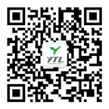The development history of energy meters as devices for measuring electrical energy consumption can be traced back to the end of the 19th century and the beginning of the 20th century. On May 20, 1875, seventeen countries signed the famous "Metric Convention" in Paris, France. This was an agreement by the government to adopt the International System of Units and ensure consistent measurement results globally. It played a significant role in ensuring the unity of international measurement standards, promoting international trade, and accelerating technological development. Therefore, the International Metrology Congress has designated May 20th as "World Metrology Day".
 |
In 1880, Thomas Edison from the United States successfully developed the world's first direct current energy meter, known as the ampere-hour meter, by applying the principle of electrolysis. The discovery and application of alternating current in 1885 led to new demands for the development of energy meters. As a result, alternating current energy meters were created. In 1889, the first induction-type energy meter was introduced. A German named Bült created the world's first electromagnetic induction energy meter, which weighed a total of 36 kilograms. 5 kg for a Hungarian company named Ganz. However, it was very large in size and weighed 36 pounds. 5 kilograms. |
2. Induction-type energy meters.
With the discovery and application of alternating current, the volume and weight of induction-type energy meters suitable for alternating current have been continuously reduced due to technological and processing advancements. This type of energy meter has several advantages, including a simple structure, safe operation, low cost, durability, easy maintenance, and mass production. Therefore, it has experienced rapid growth.
3. Electromechanical energy meters
 |
At the end of the 20th century, people proposed multiple requirements for energy meters, such as multiple functionalities, high accuracy, ease of use, and communication interfaces. In response to these requirements, scientists have designed long-lasting electromechanical integrated energy meters based on inductiontype energy meters. They have also incorporated electronic circuits to enhance their functionality. |
4. Electronical energy meters
At the end of the 1960s, Japan invented a fully electronic energy-measuring device and produced a 2885 type digital power converter, which received attention worldwide. Electronical energy meters have powerful functions, high accuracy, flat and stable error profiles,low starting current, wide frequency response range, low power consumption, strong overload capacity, anti-tamper function, and easy installation.
 |
In the 1970s, with the continuous development of digital technology, digital energy meters began to gradually become popular. Digital energy meters adopt digital circuits and have higher measurement accuracy and richer functions, such as time sharing metering, maximum demand metering, etc. In addition, digital energy meters also have higher stability and reliability and are less affected by external factors. |
6. Multi-functional energy meters
7. Smart energy meters
 |
At the beginning of the 21st century, with the rapid development of the Internet of Things and smart grid technology, |
The development of energy meter is a process of continuous innovation and improvement. From the initial electromagnetic induction principle to the later applications of motor, electrostatic coupler, and electronic technology, the accuracy and reliability of energy meter have been significantly improved. With the development of smart grid and renewable energy, energy meter are also constantly upgrading and improving to adapt to new needs and challenges. The measurement of electric power consumption has entered a digital era, which has made people realize the changes brought about by digital technology to today's society.
Yongtailong, as the creator of smart energy meters, has always implemented a product leading strategy and continuously increased research and development efforts in energy meters. So, what direction will the next upgrade be aimed at? Let us look forward to it together.

 English
English 中文简体
中文简体
.jpg)


.jpg?imageView2/2/w/500/h/500/format/png/q/100)











